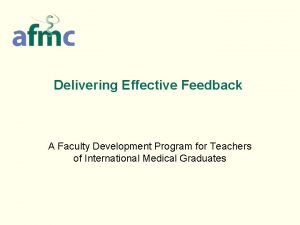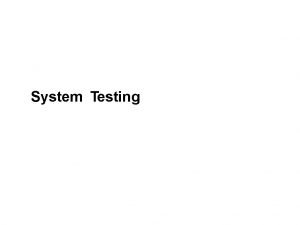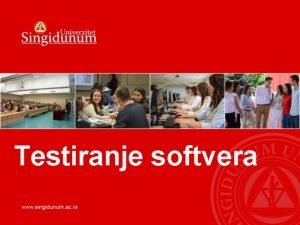Faculty Development Mock Orals Jukes P Namm MD









- Slides: 9

Faculty Development: Mock Orals Jukes P. Namm, MD, FACS, FSSO, HEC-C Associate Professor of Surgery

OBJECTIVES 1. Clearly understand the purpose of the ABS Certifying Exam 2. Be able to create a realistic testing environment for examinees 3. Assess performance fairly and consistently

PURPOSE OF THE CERTIFYING EXAM (CE) Candidates have already demonstrated sufficient knowledge of surgery by their successful performance on the QE. The purpose of the CE is to assess process thinking and judgment. Candidates should be able to answer not only what they would do and how, but why.

TESTING ENVIRONMENT Introduce yourself to the examinee. Create a collegial atmosphere in the room to bring out the best in each examinee. The encounter with the examinee should be like a conversation between colleagues.

FORMAT Candidates will be expected to get through four cases in each room (30 minutes). Each examiner will alternate giving the case and is responsible to ensure there is ample time for each case (7 minutes). If the examinee is taking too long on a case, the examiner should end the case and move on to the next one. All the pertinent history and physical exam findings should be given to the examinee in the initial scenario so that they can go straight into the diagnostic workup and therapy. Use of additional stems are up to the examiner and as time allows. Technical cases are those that require the examinee to describe a technique or procedure.

ASSESSMENT Organization and rationale for planned actions. Avoids errors and critical fails (omission and commission) associated with the case. Recognizes personal limitations in knowledge and expertise Demonstrates appropriate surgical judgment, clinical reasoning skills and problemsolving ability. Refrain from giving verbal or non-verbal cues to the examinee during the case (head nods, “good”, eyebrow raises, etc)

GRADING Each examiner will independently evaluate the candidate’s performance but okay to discuss the cases with each other. Criteria for a critical fail is listed on the case outline and usually consists of a major misstep or a reckless decision. This qualifies as an automatic fail for that case.

GRADING An average score of 5 or below in a room would be a failing score. For example, four “equivocal” cases would be a failing score (5+5+5+5=Ave 5). Where as, two “passes” and two “equivocals” would be a passing score (6+6+5+5=Ave 5. 5). 6 5. 5 5 4

LOMA LINDA UNIVERSITY HEALTH Department of Surgery

















